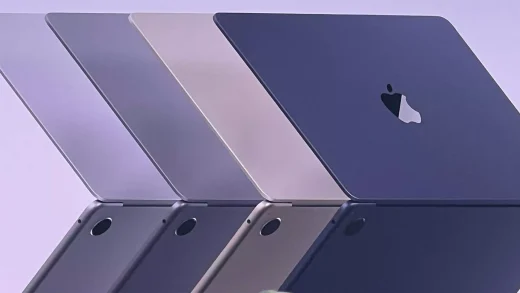The Nvidia GeForce RTX 4060 Ti is without a doubt one of the most anticipated graphics card launches of this generation, and now that it’s here, it should be an easy win for Nvidia over archrival AMD. I wish that were the case.
That’s not to say that the RTX 4060 Ti doesn’t hold up well against AMD’s midrange offerings at the moment, it absolutely does, and there’s no question that the features this card brings to the table are impressive, especially DLSS 3, which is the first time a properly midrange GPU (under $500/£500/AU$750) is seeing this feature.
It goes without saying that Nvidia is leaning into DLSS 3 as its biggest selling point, and as I’ll get into later, it definitely delivers significantly better performance than the RTX 4060 Ti should be capable of given its various specs — even factoring in the expanded cache which widens up the memory bandwidth of the card despite still having just 8GB GDDR6 VRAM to work with.
The decision to go with 8GB VRAM for this card — a 16GB VRAM variant is going to be released in July 2023 for an MSRP of $499 (about £400/AU$750) — is probably the only thing that kept the price on this card under $400. With an MSRP of $399 (about £320/AU$600), the Nvidia Founders Edition RTX 4060 Ti 8GB is the same price as the Nvidia GeForce RTX 3060 Ti it is replacing, and generally, it offers a pretty good value for that money, with some caveats.
In terms of native, non-DLSS performance, there isn’t a whole lot of improvement over the previous generation, which is definitely going to disappoint some, if not many. Given the kinds of performance advances we’ve seen with higher-end cards, we were hoping to see that extend down into the heart of the midrange, but it seems those benefits generally stop at the Nvidia GeForce RTX 4070.
Instead, you have a card that relies very heavily on DLSS for carry its performance over the line, and where it works, it is generally phenomenal, offering a real, playable 1440p gaming experience, and even brushing up against some decent 4K performance with the right settings.
This is something AMD has really struggled to match with its FSR, and so Nvidia really has a chance to score a major blow against AMD, but as we’ll see, the best AMD graphics card in the last generation’s midrange, the AMD Radeon RX 6750 XT, actually outperforms the RTX 4060 Ti in non-ray tracing workloads, including gaming, so this does not bode well for Nvidia once AMD releases its current-gen midrange cards.
This is somewhat exacerbated by the fact that the RTX 4060 Ti’s ability to use its new features is fairly limited, and while features like DLSS 3 with Frame Generation are available on the best PC games like Cyberpunk 2077 and Returnal, as of the launch of the RTX 4060 Ti, there are only 50-ish games that support DLSS 3.
This list will surely grow over time, but you certainly won’t get this kind of support on games that may be just recent enough to push the RTX 4060 Ti in terms of its performance, while being just old enough that you’ll never see a DLSS 3 patch for it.
I can say that if you’re coming from an RTX 2060 Super or older, then this card is absolutely going to blow your mind. It’s effectively the RTX 3060 Ti’s NG+, so if you missed what I consider to be the best graphics card of the last generation, you’ll get all that and more with the RTX 4060 Ti. If you’re coming from an Nvidia Ampere card though — especially from greater than the RTX 3060 Ti — chances are you are going to find this is really a downgrade with some neat features to soften the blow.
NVIDIA GEFORCE RTX 4060 TI: PRICE & AVAILABILITY

- How much is it? MSRP listed at $399 (about £240, AU$600)
- When is it out? It is available starting May 24, 2023
- Where can you get it? You can buy it in the US, UK, and Australia
The Nvidia GeForce RTX 4060 Ti 8GB is available starting May 24, 2023, with an MSRP of $399 (about £240, AU$600). This is the same launch price of the Nvidia RTX 3060 Ti that this card is replacing, so we’re glad to see that Nvidia didn’t increase the price on this variant with this generation.
This also puts it on par with the AMD Radeon RX 6750 XT, which initially launched for $549 (about £440/AU$825), but which you can find under $400 right now, even without discounts, at major retailers. AMD hasn’t released an RX 7700 XT yet, which would be this card’s more natural competition, so comparing the RX 6750 XT and the RTX 4060 Ti isn’t really fair, but it’s all we have for now until AMD launches its RTX 4060 Ti challenger.
NVIDIA GEFORCE RTX 4060 TI: FEATURES AND CHIPSET

- Only uses one 8-pin…but still requires a 16-pin converter?
- 3rd-generation ray tracing and 4th-generation tensor cores
- 288.0 GB/s memory bandwidth, but 32MB L2 cache boosts effective bandwidth to 554.0 GB/s (according to Nvidia)
| Component | Nvidia GeForce RTX 4060 Ti |
|---|---|
| GPU | AD106 |
| Transistor count | 22.9 billion |
| TGP | 160W |
| Shader units | 4,352 |
| RT Cores | 34 |
| Tensor Cores | 136 |
| Base Clock | 2,310MHz |
| Boost Clock | 2,535MHz |
| VRAM | 8GB GDDR6 |
| Memory Clock | 2,250MHz |
| Bus Size | 128-bit |
| Memory Bandwidth | 288.0 GB/s |
The Nvidia RTX 4060 Ti is the first properly midrange Nvidia Lovelace graphics card, and so it is built on TSMC’s 5nm process, with about 22.9 billion transistors across 34 streaming multiprocessors (SM), which come with 128 shader cores (CUDA), 4 fourth-generation tensor cores, and 1 third-generation ray tracing core per SM.
The clock speed is a solid 2,310MHz base clock, which is about a 64% improvement over the RTX 3060 Ti’s 1,410MHz, with a boost clock of 2,535MHz, or about 52% faster than the RTX 3060 Ti’s 1,665MHz.
The biggest difference between the two cards is the memory bus. The Nvidia RTX 4060 Ti uses a 128-bit bus for 8GB GDDR6 VRAM, while the RTX 3060 Ti uses a 256-bit bus for the same amount of VRAM. The RTX 4060 Ti has a faster memory clock (2,250MHz), which combined with the expanded L2 cache (32MB), the RTX 4060 Ti has a slightly faster effective memory speed of 18 Gbps to the RTX 3060 Ti’s 15 Gbps, while having a much faster effective memory bandwidth.
Still, this really does smack of over-engineering. The move to a 128-bit bus doesn’t seem necessary, and given what we’ve seen of other Lovelace cards, like the Nvidia GeForce RTX 4070, I definitely think Nvidia could have stuck with a higher bus width and it wouldn’t be catching nearly the grief it is getting over this.
What’s more, even though the performance of the RTX 4060 Ti is better than the RTX 3060 Ti, I really think that had this card had the same bus width as the RTX 3060 Ti, this card would absolutely anything that approached it in the midrange. As it stands, the RTX 4060 Ti is great, but fails to score the knockout it really needed.
It is worth mentioning though that this card also uses significantly less power than the RTX 3060 Ti. That card had a TGP of 200W, while the RTX 4060 Ti 8GB comes in at 160W, which is a 20% improvement in efficiency. This is great for keeping your build under 600W, and it’s a move in the right direction for everyone and deserves to be praised.



